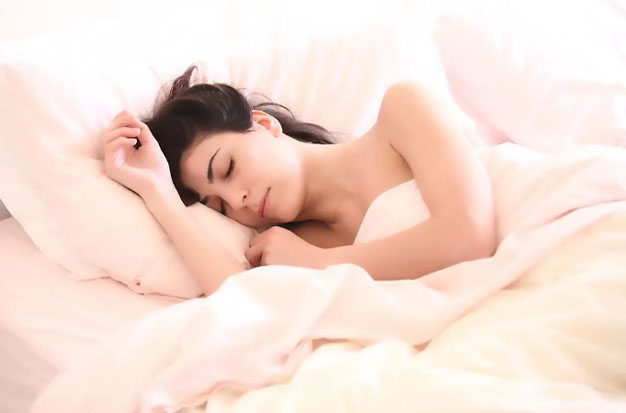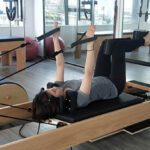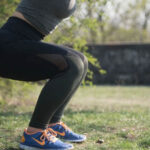How to Relax Your Facial Muscles in Easy Ways

Exactly how at ease do you look? Some of us are very expressive. We laugh, frown, grimace, and smile. We allowed our expressions to freely express our surprise, joy, dismay, fear, suspicion, or anger. Others may restrain, suppress, or refuse expression because it’s in their nature to do so or because doing so isn’t acceptable in their society or culture at the time (or ever). For some people (like me), emotion is either expressed or suppressed while they sleep.
Therefore, it’s crucial to develop deep facial relaxation. Face and neck muscles will become more relaxed as a result, and your demeanor will improve. These relaxation techniques are especially simple to practice as you drift off to sleep. Relaxing your eyes and your tongue are the two simplest steps.
Tips for Facial Muscles Relaxation Exercises
Here are some helpful suggestions to keep in mind before you try relaxation exercises to aid in falling asleep.
- While these exercises can be helpful tools on their own, they may be more effective when combined with other improvements to your sleep hygiene, such as maintaining a consistent sleep schedule and cultivating daytime habits that promote sleep.
- Relaxation exercises require practice, just like learning any new skill. Relaxation exercises work best when used repeatedly over time rather than just once or briefly.
- Finding a relaxation technique that works for you is more important than searching for the best and most potent ones, despite how alluring that may seem. If one exercise doesn’t work, try another because that might require some experimenting.
While the majority of people can safely perform these exercises, others may benefit from consulting their doctors first. For people with epilepsy, psychiatric disorders, or a history of trauma, this is especially crucial.
Why Face Yoga Before Sleep Is So Important
Although everyone is aware of how critical sleep is to one’s health and wellbeing, getting the recommended 8 hours per night is still difficult. Unfortunately, not only does getting enough sleep make you tired, irritable, and require a strong cup of coffee every morning, but it also negatively impacts your skin. Lack of sleep can increase stress hormone levels, which can exacerbate skin conditions like psoriasis and acne. On the other hand, sleeping is important for having clean, healthy skin because cellular repairs take place while you’re asleep. The stratum basale, the deepest layer of your skin, is where this process begins, and new cell production then moves to the dermis, the skin’s outer layer. A deep sleep encourages the production of collagen, which is necessary to maintain taut and tight skin, and this process is at its most active between the hours of 11 pm and 4 am. And if all of these advantages materialize as you drift off to sleep, then it is important to make the most of the window of time before bed in order to prepare your skin and benefit the most from a restful night’s sleep. Continue reading for our top 4 facial exercises to perform before bed.
How Many Expressions Can We Make With Our Faces?

The idea that human emotions and their corresponding facial expressions are universal was first put forth by Charles Darwin. Until the work of Silvan Tomkins, Paul Ekman, Wallace Friesen, and Carroll Izard demonstrated that facial expressions were largely universal across cultures, his theory was rejected by the majority of scientists.
The Facial Action Coding System, developed by Ekman and Friesen, depicts each movement our mimetic muscles are capable of making in detail.
For a very long time, it was thought that there were only six basic facial expressions that people could make: happy, sad, disgusted, angry, surprised, and fear (though contempt is occasionally thought of as a seventh). Then, in 2014, Ohio State University researchers used a computer to analyze more than 5,000 photos and discovered that there are actually 21 universal expressions, including the six basic ones and 15 compound expressions like “sadly angry” and “happily disgusted.””
More universal expressions were uncovered by Ohio State University researchers in 2019. 35 expressions that convey emotion consistently across cultures were discovered after 7.2 million images were examined. They were pleased to discover that while we only have 17 expressions for humans to express a variety of happy emotions, we only have one expression for disgust, three for fear, and five each for sadness and anger.
The desire to track how genes, chemicals, and neural pathways control emotion is what drives scientists to learn more about facial expressions. They intend to use these discoveries in the treatment of ailments like PTSD, which is characterized by emotional triggers, and autism, which is characterized by a lack of empathy.
How Do You De-Stress Your Face’s Muscles?
- Put the tissue soaked in essential oils in front of your nasal passages, and take five counts or a full breath to fill your chest and abdomen. Five to ten times, please. Here’s a tip to help you focus if your thoughts start to stray: imagine breathing in and out while doing this: “inhale” and “exhale.” Note: Aromatherapy relieves anxiety by allowing the body to breathe diaphragmatically or more fully to have a full oxygen-to-carbon dioxide exchange. The mind is cleared of the day’s thoughts when a mantra is silently recited while performing a breathing ritual.
- Slide your hands up from your eyebrows, hand over hand, up to the center of your forehead, and up toward your hairline with medium to firm pressure. Repeat several times.
- Swoop both hands around your forehead in circular motions, moving from the center toward the temples and then returning to the center. Repeat this several times; the motion is calming. It relieves body stress to calm the forehead.
- Beginning at the bridge of your nose, pinch and nudge your way up to the outer corners of your brows. Then, place your fingers on top of your brows (with your thumbs underneath) to grasp the entire edge of your brow line. The adrenal glands, which work overtime when we’re stressed, are represented by the eyebrows. Soothing and stress-relieving manipulation of the area.
- You should place one middle finger between the brows and the other one directly on top of it. Trace three tiny spirals with the two fingers, applying more pressure as you go. Replicate going the other way. Each direction should be repeated three times. After that, hold the pressure for three to five slow counts. According to Chinese medicine, the liver is located between the brows, and it not only helps the body get rid of toxins but also deals with irritability, emotional inflammation, and anger.
- Put a finger over each closed eye after warming it in the tea. Press gently on the lid with the pads of your fingers while feeling the eye slowly turn inward. Repeat several times. Massage the lower orbital muscle that is located just beneath the eyes. The body will surrender more quickly if you do this repeatedly because the eyes are still working while we sleep and are frequently forgotten, even by the art of touch.
- Repeat pressure-point spiral movements from above while placing the middle fingers bilaterally on either side of the nostrils to relieve sinus pressure, which can interfere with sleep.
- Slide your hands slowly to the jaw muscle, grip it, and then release any tension by moving your hands in an upward circular motion while applying medium to firm pressure. Finish by applying pressure to the jaw’s pressure points, which are situated just below the earlobe.
- Moving from the jaw and both sides of the ears upward toward the temples, slide hands on either side of your face so that your fingers scissor the ears. This movement is thought to help the body release endorphins, which are the body’s natural painkillers and feel-good hormones. It is said to put you in a blissful state if repeated frequently enough. One of the body’s most primal organs, the ears are also known for having powerfully nurturing reflex points. (While being fed, babies play with their ears or those of their mothers to ease their anxiety.
*Find More Muscle Relaxation Methods Here!
- How to Relax Your Tight Sphincter Muscle with Useful Tips
- How Often Should I Relax My Hair & How to Relax Hair
- How to Have a Relaxing Weekend – Enjoy Yourself
- How Long Do Muscle Relaxers Stay in Your System
- Do Muscle Relaxers Cause Weight Gain – Muscle Relaxers Side Effects
- Why Does My Fat Itch When I Exercise – Common Causes
- How to Reduce Your Tongue Tension – Simple Exercises
- How to Relax During Sports – Simple Sport Psychology Techniques
- How to Relax Chest Muscles After Breast Augmentation?
- Can a Chiropractor Prescribe Muscle Relaxers?
- Why Is My Waist Turning Bigger With Exercise?
- How Does Visualization Promote Relaxation and Stress Reduction?
- 5 Reasons Entrepreneurs Are Uncomfortable During Vacations
- How Might Regular Cardiorespiratory Exercise Affect Hypertension?
- How to Relax Throat Muscles Anxiety?
- How to Relax Your Jaw – The Best Ways to Relax Your Jaw









